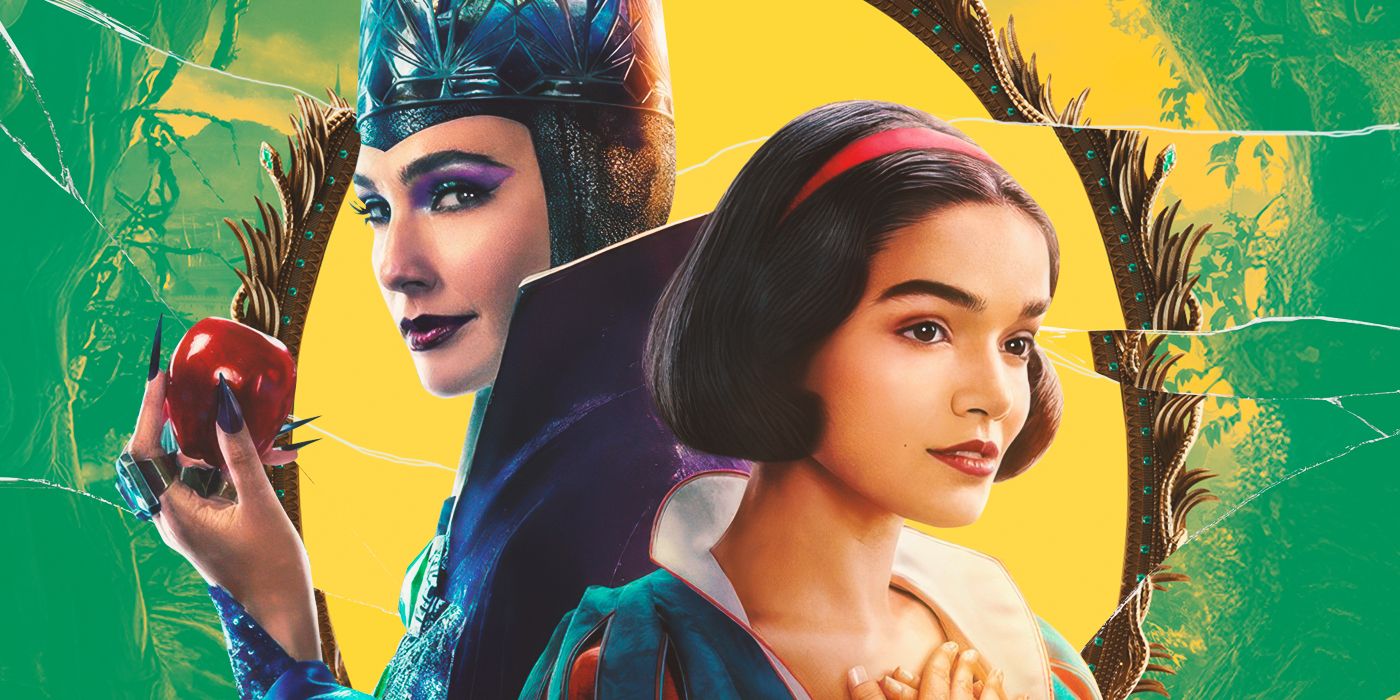Horror may not be the first word that comes to mind when most people think of Snow White and the Seven Dwarfs, but all it takes is a quick look back at Walt Disney‘s 1937 classic to realize the film is much darker than most fans probably remember. Nowadays, Disney is largely synonymous with the same family-friendly fairy tales that have inspired multiple generations, and as a character who is arguably the studio’s first princess, Snow White is synonymous with the classic image of a wholesome heroine. What most people forget is that the movie that started it all for the company is also brimming with equally unsettling visuals, which is what makes it all the more surprising to learn that Disney actually took inspiration from horror classics like Nosferatu when developing his feature-length fairy tale.
‘Snow White and the Seven Dwarfs’ Took Heavy Inspiration From the German Expressionism Movement
With Roger Eggers‘ remake of director F.W. Murnau‘s 1922 classic recently taking a bite out of global audiences and Disney’s live-action Snow White remake soon to hit theaters, both titular characters have once again been linked in the popular consciousness, but the relationship between both original projects goes back almost a century. Alongside other horror classics like The Cabinet of Dr. Caligari and director Rouben Mamoulien‘s 1931 version of Dr. Jekyll and Mr. Hyde, Nosferatu is just one of the few iconic horror hits to directly influence Snow White‘s dark aesthetic. Moreover, the specific contributions these films make to Disney’s film can best be understood by first grasping their relationship to one of the first artistic movements in the history of cinema—German Expressionism.

Related
Disney Had a Universe of Live-Action Snow White Spinoffs Planned — What Happened?
2025’s Snow White isn’t Disney’s first attempt to reboot the original princess.
In a 1975 interview with a short-lived Harvard magazine, Snow White animator Marc Davis confirmed the film’s creative team took note of Nosferatu and The Cabinet of Dr. Caligari while mining German Expressionism for inspiration, and as a result, the movement’s most infamous attributes appear throughout Snow White. A filmmaking method that dominated 1920s Germany by rejecting realism in favor of warped visuals, surreal imagery, and psychological themes, German Expressionism lurks in two of Snow White’s most horrifying scenes—Snow White’s (Adriana Caselotti) escape into the forest and the transformation of the Evil Queen (Lucille La Verne). The former features the same slanted set design as The Cabinet of Dr. Caligari, with the twisting fingers of the trees in particular resembling Dr. Caligari‘s warped streetlamps, and the latter balances Nosferatu‘s gothic aesthetic with surreal lighting to produce one of the movie’s most unsettling sequences.
The Influences Behind ‘Snow White and the Seven Dwarfs’ Highlight the Film’s Unconventional Magic
The Evil Queen’s transformation also calls back to the soul-splitting, alchemical imagery that runs rampant throughout Dr. Jekyll and Mr. Hyde, further rounding out Snow White‘s horror inspirations. These connections not only provide an intellectual undertone to one of Disney’s most important films, but they also add a recognizable depth to Snow White‘s emotional stakes. Just as German Expressionist films use absurd visuals to highlight the internal truths of troubled consciousness, Snow White’s escape from the Huntsman (Stuart Buchanan) represents the chaos of an adolescence in crisis, the terror of witnessing the world on your own for the first time, and being overwhelmed by its constant sense of danger. Similarly, the unstable imagery attributed to the queen’s transformation imbues the scene with the volatility one would expect from otherworldly witchcraft, literally transforming what could have otherwise been a gimmick into one of Disney’s most memorable villain moments.
In both cases, the application of German Expressionism in Snow White and the Seven Dwarfs balances the film’s optimism with a morbid urgency that imbues the movie with a uniquely mixed tone, even going so far as to surpass the original movement’s aims. In Davis’s opinion, animation proved better suited for transporting a film audience from real life into the realm of fantasy, underscoring how this essential Disney film is much more revolutionary than the world remembers. Although the film is just as often recalled for its upbeat sing-alongs and surprisingly helpful animals, Snow White‘s horror represents a step forward in filmmaking theory that brought a generation of cinematic experimentation to a global audience. By giving the movie some of its most memorable scenes, Snow White‘s horror inspirations helped solidify the film as a classic beloved enough to earn a live-action adaptation today, proving that sometimes the horrific can also create a legacy of enduring magic.

Snow White and the Seven Dwarfs
- Release Date
-
January 14, 1938
- Runtime
-
83 minutes
- Director
-
Ben Sharpsteen, Larry Morey, David Hand, Perce Pearce, William Cottrell, Wilfred Jackson
- Writers
-
Ferdinand Horvath, Dorothy Ann Blank, Ted Sears, Merrill De Maris, Webb Smith, Richard Creedon, Otto Englander, Dick Rickard, Earl Hurd
- Producers
-
Walt Disney
-

Adriana Caselotti
Snow White (voice) (uncredited)
-

Lucille La Verne
Queen / Witch (voice) (uncredited)
-

Harry Stockwell
Prince (voice) (uncredited)
-

Roy Atwell
Doc (voice) (uncredited)




